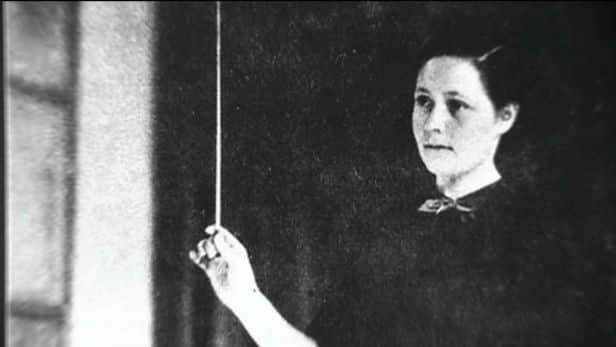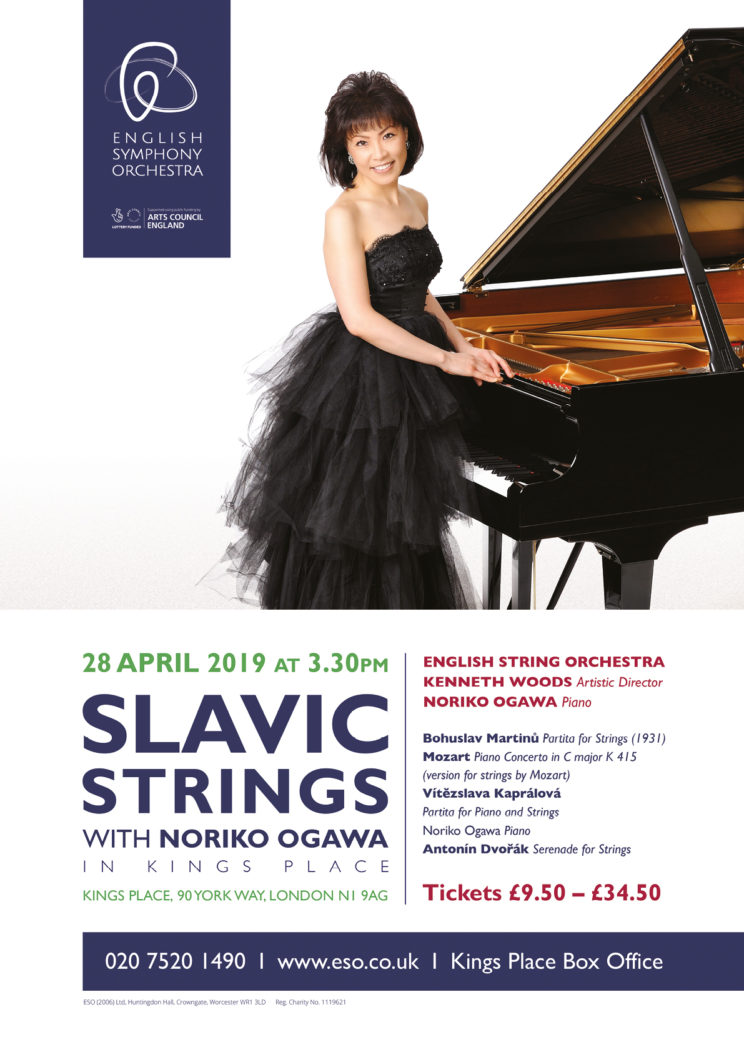Sunday the 28th of April at 6:30 PM
Kings Place London
Book here
There is a love story at the heart of today’s programme.
Bohuslav Martinů was, alongside Dvořák, Smetana and Janacek, one of very greatest of all Czech composers. Like his near contemporary from Hungary, Béla Bartók, Martinů thrived as a composer on integrating the most exciting musical developments of the early 20th Century with a strong grounding in folk music, particularly the rustic folk melodies of Eastern Europe. Perhaps the biggest influence on Martinů’s very unique voice was that of Stravinsky’s neo-classical music. Martinů’s music never strays far from its roots in melody and dance rhythm, but also shows an uncommon mastery of modern harmony and a genius for instrumentation. He was an exceptionally prolific composer whose output includes fifteen operas, fourteen ballets and a remarkable cycle of six symphonies.
His Partita for Strings comes from 1930. It’s an engaging work which highlights Martinů’s sense of humour as well as his astonishing sense of adventure in writing for strings. It is a piece that manages to somehow be both quirky and virtuosic.
Martinů and Vítězslava Kaprálová first met in Prague in 1937. Martinů was living in Paris at the time and had come back for a production meeting ahead of the première of his opera, Julietta. This fateful encounter was to have life-changing ramifications for both composers. Following her move to Paris as a result of the German occupation of Prague, Martinů would become Kaprálová’s friend, teacher and champion, and later her lover and soulmate. When she died from tuberculosis, aged only 25, on 16 June 1940, her last words were “It is Julietta,” recalling the title of the opera which had originally brought them together.

Vítězslava Kaprálová conducting
However, to remember Kaprálová only for her association with Martinů would be to do a grave disservice to one of the most talented musicians of the 20thCentury. She was equally at home as composer and conductor, and in her early twenties had already made historic debuts with orchestras like the BBC Symphony and the Czech Philharmonic. Had she lived longer, the history of women on the conductor’s podium might have been very different indeed.
Her Partita for Piano and Strings was very much a result of Kaprálová’s time in Paris with Martinů. She began work on the piece in March 1938 and finished it in June 1939. It is a work of astonishing quality, strength and originality, a remarkable achievement for a composer of just twenty-four. She didn’t live to hear it performed. The work was premièred in 1941 in Brno, but Kaprálová’s music fell into shadow during the rest of World War II and was shockingly neglected for most of the rest of the twentieth Century. It was only in the 1990s that musicians and scholars began to urgently re-examine her legacy and that new editions of most of her remarkable output were printed
Mozart’s Piano Concerto no. 13 in C major K 415 was one of three concerti he wrote in 1782-3 for his subscription concerts in Vienna. Mozart was, at the time, perhaps more acclaimed as a pianist than even as a composer, and his output of 27 concerti for the piano illustrates not only his affection for the genre, but its value to him as a way of making a living. Like the two concerti which preceded it, K415 was composed so as to be performable in the widest possible range of performance situations. It was originally scored for a relatively large orchestra, notable for the inclusion of trumpets and timpani, but Mozart also made it possible for the piece to be played by piano and string orchestra (the version you will hear today) or even piano and string quartet. Like many other masters of the past, including Bach, Beethoven, Brahms, Mahler and Elgar, Mozart was extremely pragmatic about arranging both his own music and that of others for either larger or smaller forces.
Antonin Dvořák’s Serenade for Strings was one of this composer’s blessed pieces, pouring out of him seemingly without effort in just 11 days. It was ahappy and productive time for the thirty-three year-old composer: he’d just married and had his first son. He’d recently received an important stipend for his work, bringing some badly needed financial security, and his work was receiving its first wave of international recognition following Brahms’s endorsement of Dvořák’s Third Symphony. The Dvořák Serenade shared its composer’s desk with another important work, his Fifth Symphony.
If tenderness and intimacy are historically among the qualities one most associates with serenades of old, the opening Moderato certainly embodies them, and there is something magically nocturnal about the atmosphere, too. The first two bars introduce a simple device that will become one of the work’s unifying ideas- answering the theme with a repetition of itself in a lower voice a bar later- a technique Dvořák will use extensively in the Scherzo and the Finale.
Dvořák’s Serenade for Strings preceded Tchaikovsky’s by five years, but like his Russian counterpart, Dvořák’s second movement is also an elegant waltz. The Scherzo is playful in mood, but virtuosic and full of contrapuntal felicities – its second theme is one of this great melodist’s most beautiful tunes. As with so many of the greatest serenades, the genre’s reputation for lightness of touch is belied in the slow movement, here a Larghetto of incredible vulnerability and longing. The mood turns more serious in the Finale’s opening bars, which suggest an element of Sturm und Drang (“Storm and Fury”) in F-sharp minor, but the mood doesn’t stay serious for long and the second theme could well have been first heard in a circus. From here, the musical miracles unfold one after the other – first a fleeting return of the longing theme of the Larghetto, then, bringing the whole work full circle as Tchaikovsky would 5 years later, a return of the opening of the first movement. Where Tchaikovsky’s apotheosis would be triumphal, Dvořák’s couldn’t be more touching or more tender, before launching into a rousing coda in which that Sturm und Drang opening is transported from angry F-sharp minor to radiant E major.

I think she was a very remarkable figure, and her untimely demise deprived us of much unrealised potential. It is worth remembering that after her relationship with Martinu ended (I think because he would not leave his wife), she was briefly married to Jiri Mucha (son of the great Czech artist, Alphonse Mucha), before her sudden death. Some speculate that the German occupation of Prague may have affected her health. A Gestapo interrogation more or less finished off Alphonse Mucha. Jiri Mucha was himself a successful writer who provided a libretto for Martinu’s Field Mass (1939) which was written to honour the Czech nationals fighting with the French resistance. They were all part of the same circle which centred on the Paris and Prague. During the war years, Martinu fled to the US, while Jiri Mucha went to Britain, where he met his second wife – also a composer, Geraldine Mucha (nee Thomson). She died only in 2012 in ripe old age. She is another lost treasure trove, having been a pupil of Arnold Bax and William Alwyn.